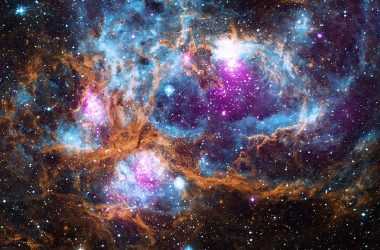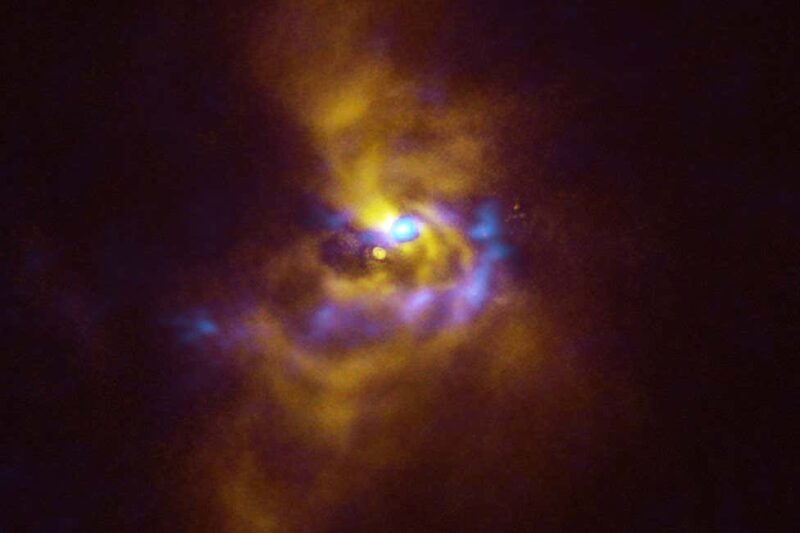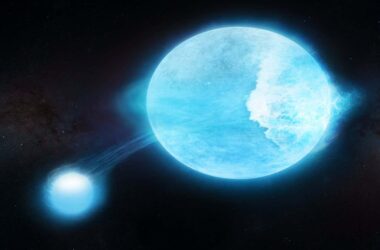The young star, V960 Mon, is surrounded by colossal spiral arms of dusty material in this captivating image generated using data from the SPHERE instrument. Clumps of gas (colored blue) that potentially form giant planets are revealed by the ALMA telescope.
ESO/ALMA (ESO/NAOJ/NRAO)/Weber et al.
In this mesmerizing photograph, a young star named V960 Mon is enveloped by immense arms of cosmic dust that could eventually collapse to give birth to gas giant planets as massive as Jupiter.
Planet formation typically occurs in two ways: core accretion and gravitational instability. With core accretion, solid bits of matter around a star collide and gradually grow into a planet.
In gravitational instability, however, gas and dust come together to form clumps that collapse under their own gravitational force, giving rise to a planet’s core. This process is believed to occur farther away from the host star compared to core accretion, where the temperature is much cooler, leading to the formation of gas giants.
Nevertheless, there has been a dearth of observations to confirm exactly how planets form through gravitational instability.
Now, Philipp Weber from the University of Santiago, Chile, and his colleagues have utilized the Spectro-Polarimetric High-contrast Exoplanet Research (SPHERE) instrument at the European Southern Observatory’s Very Large Telescope in Chile to capture the planet-forming process in action, resulting in the image above.
“Until recently, no one had ever witnessed the occurrence of gravitational instability at planetary scales in real observations,” stated Weber.
V960 Mon is located approximately 5000 light years away from Earth in the constellation Monoceros, which derives its name from the Greek word for “unicorn.” Radiating with energy, the star emits powerful gas jets that create vast spiral arms extending even further than the width of our entire solar system.
Weber and his team also examined previous observations of V960 Mon captured by another telescope, the Atacama Large Millimeter/submillimeter Array in Chile. They discovered that the spiral arms are undergoing a process known as fragmentation, which involves the formation of gas and dust clumps. This precursor is thought to precede planet formation through gravitational instability.
Topics:








